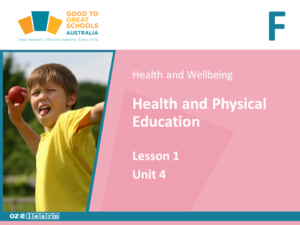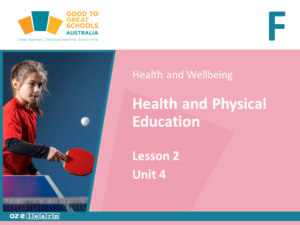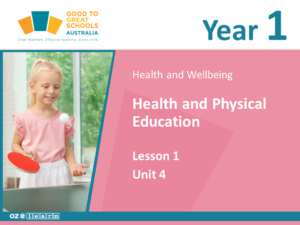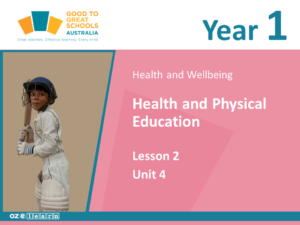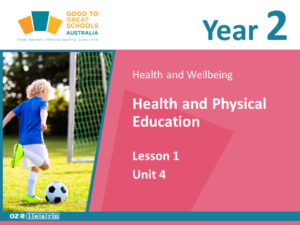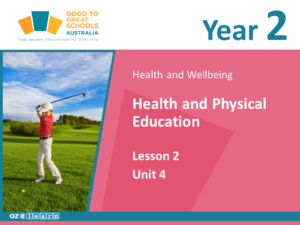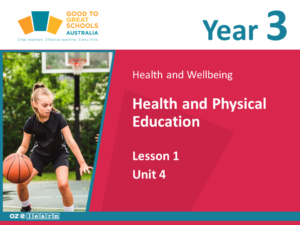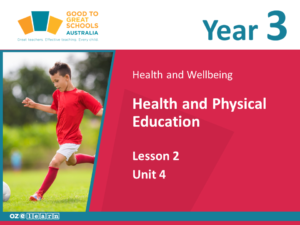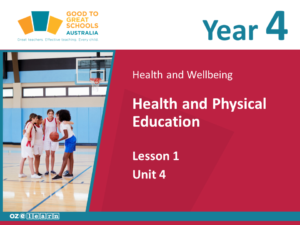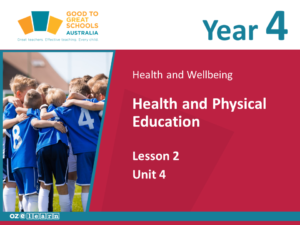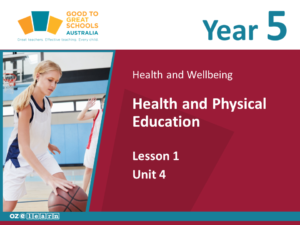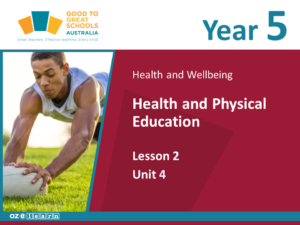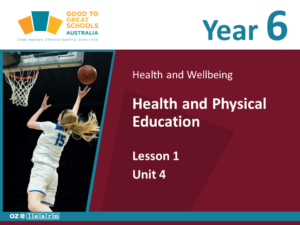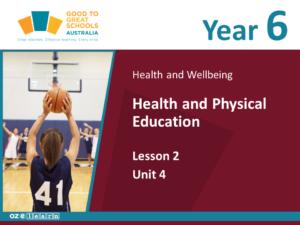Health and Physical Education - Unit 4
Foundation – Year 6
Health and Physical Education F-6 is a Health and Physical Education program that has an explicit instruction pedagogy, focuses on Australian perspectives and covers Australian Curriculum requirements.
Share this page:
Starter Lessons
Unit Overviews
Foundation Year
Australian Curriculum Content Descriptions
In Cape York Challenges, students will develop cooperative skills through play-based activities. Students will describe how their bodies respond to locomotor and non-locomotor movement challenges in small and large groups.
Learning Objectives
In Lessons 1 to 7, students learn to:
- complete a one-hand strike with and without equipment
- complete a one-hand strike with a large racquet/bat
- dodge an opponent and communicate with words and actions to problem-solve
- maintain balance
- skip, hop and jump
- spin a hula hoop
- control the parachute and demonstrate how individual movements contribute to the team’s movement.
Assessment
Observations of individual skill components during each lesson and formal assessment in Lessons 8 and 9. Students to be assessed on performance of skill and active involvement in class activities.
Year 1
Australian Curriculum Content Descriptions
In Big Kids Sports, students will perform the fundamental movement skills of throwing, catching, two-handed striking and kicking in a range of sports played by older students.
Learning Objectives
In Lessons 1 to 7, students learn to:
- complete a one-handed strike with a small racquet/bat
- complete a two-handed strike with a large racquet/bat
- perform a chest pass and catch a volleyball
- perform a throw and a catch with a football
- kick a ground ball
- kick a punt kick.
Assessment
Observations of individual skill components during each lesson and formal assessment in Lessons 8 and 9. Students to be assessed on performance of skill and active involvement in class activities.
Year 2
Australian Curriculum Content Descriptions
In Striking and Fielding, children will discover how to create scoring opportunities while in attack and control scoring opportunities while in defence. Students will continue to develop their fundamental movement skills of throwing, catching, kicking and running.
Learning Objectives
In Lessons 1 to 7, students learn to:
- identify scoring opportunities in striking and fielding games
- create scoring opportunities in striking and fielding games
- demonstrate the two-handed strike using a Tee-ball bat
- control direction when striking with a Tee-ball bat
- field a bouncing ball in striking and fielding games
- field a low ball in striking and fielding games
- throw underarm and overarm at a moving target.
Assessment
Observations of individual skill components during each lesson and formal assessment in Lessons 8 and 9. Students to be assessed on performance of skill and active involvement in class activities.
Year 3
Australian Curriculum Content Descriptions
In Korfball, students will perform the refined fundamental movement skills of throwing, catching, bouncing, jumping and shooting in the game of Korfball.
Learning Objectives
In Lessons 1 to 7, students learn to:
- bounce and catch a ball while stationary and moving
- chest pass, lob and bounce pass
- catch and stop, and pass and move
- shoot for a hoop
- rebound and feed the ball to a teammate
- defend an attacking player to limit scoring opportunities
- work as a team to defend an attacking team.
Assessment
Observations of individual skill components during each lesson and formal assessment in Lessons 8 and 9. Students to be assessed on performance of skill and active involvement in class activities.
Year 4
Australian Curriculum Content Descriptions
In Team Building Activities, students will use cooperative skills to complete movement tasks, problem-solve and verbalise strategies to create scoring opportunities in minor games.
Learning Objectives
In Lessons 1 to 7, students learn to:
- communicate with teammates using verbal and non-verbal cues to complete balance activities
- communicate with teammates using verbal and non-verbal cues to complete a movement challenge
- communicate with teammates to organise attacking and defensive strategies in a minor game
- throw and catch in team games
- follow instructions to dribble and kick a ball
- work as a team to defend and attack an opposition in modified games
- work as a team to complete jumping and leaping challenges.
Assessment
Observations of individual skill components during each lesson and formal assessment in Lessons 8 and 9. Students to be assessed on performance of skill and active involvement in class activities.
Year 5
Australian Curriculum Content Descriptions
In Touch Football, students will perform the specialised movement skills required for the game. Students will be challenged to discover offensive and defensive strategies within the game.
Learning Objectives
In Lessons 1 to 7, students learn to:
- pass a football
- draw and pass to beat an opponent
- tag
- complete a roll ball
- score a try
- work as a team to defend an opposition in small groups
- work as a team to defend an opposition in large groups.
Assessment
Observations of individual skill components during each lesson and formal assessment in Lessons 8 and 9. Students to be assessed on performance of skill and active involvement in class activities.
Year 6
Australian Curriculum Content Descriptions
In Indigenous Games – Net and Court Games, students participate in Indigenous games that develop greater understanding and appreciation of culture. Students explore how skills from the Indigenous games can be transferred to the modern games of Newcombe ball and volleyball.
Learning Objectives
In Lessons 1 to 7, students learn to:
- control their passing direction and power
- use passing skills to setup an attacking strategy
- create attacking strategies in the game of Newcombe ball
- communicate with teammates using verbal and non-verbal cues
- dig and set a volleyball
- serve and spike a volleyball
- block a volleyball.
Assessment
Observations of individual skill components during each lesson and formal assessment in Lessons 8 and 9. Students to be assessed on performance of skill and active involvement in class activities.

